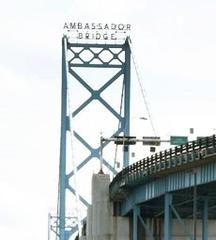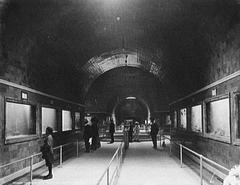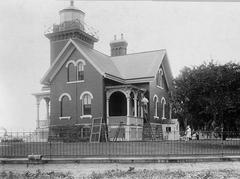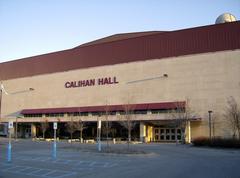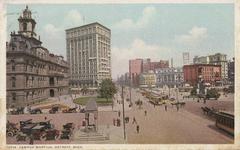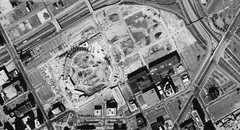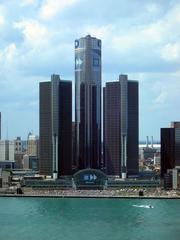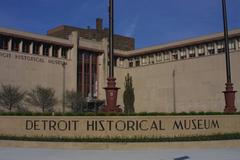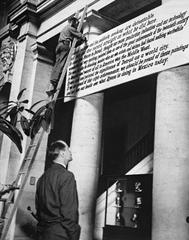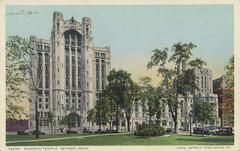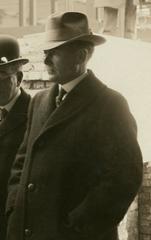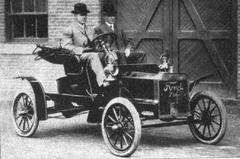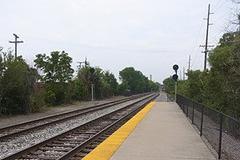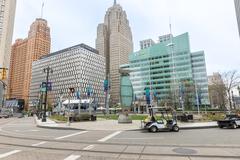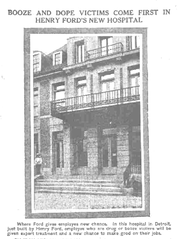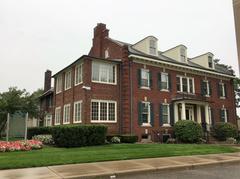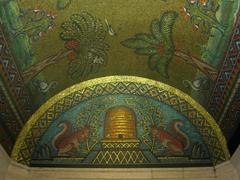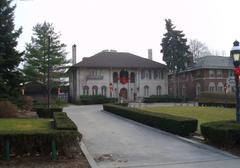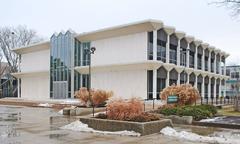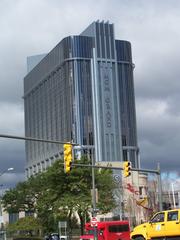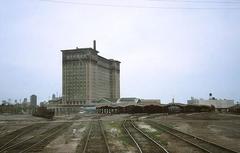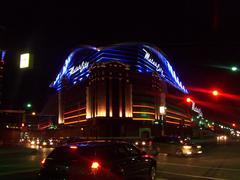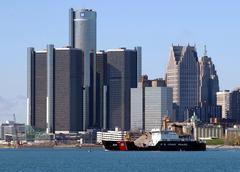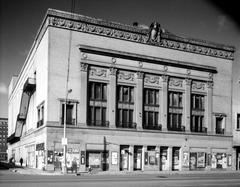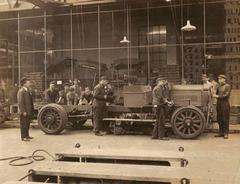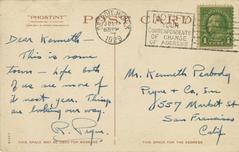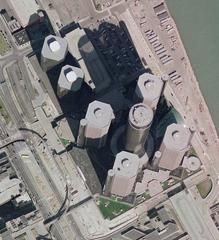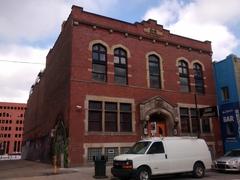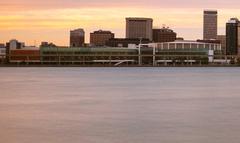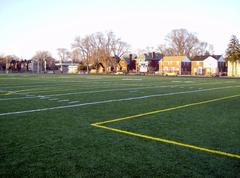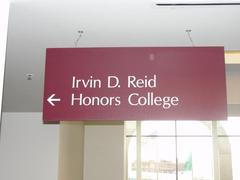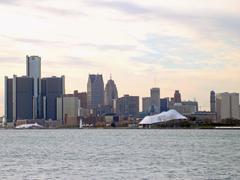Charles Lang Freer House Detroit: Visiting Hours, Tickets, and Historical Sites Guide
Date: 04/07/2025
Introduction
The Charles Lang Freer House, set within Detroit’s historic East Ferry Avenue district, is a landmark of American art, architecture, and cultural history. Designed in 1892 by Wilson Eyre, Jr., this shingle-style mansion reflects the ideals of the American Arts and Crafts movement and stands as a testament to Charles Lang Freer’s vision as a pioneering art collector. The Freer House not only served as Freer’s home but was purpose-built to display his world-renowned collection of Asian and American art, many pieces of which now reside at the Smithsonian’s Freer Gallery of Art. Today, the Freer House is open for guided tours, special events, and educational programs, offering visitors a unique opportunity to explore Detroit’s Gilded Age legacy and Freer’s enduring cultural influence (Freer House History; SAH Archipedia; Detroit Historical Society).
Table of Contents
- Introduction
- Origins and Construction
- Charles Lang Freer: The Man and His Legacy
- Architectural and Artistic Significance
- Smithsonian Connection
- Preservation and Current Use
- Visiting Information: Hours, Tickets, Accessibility
- Notable Features and Artifacts
- Educational and Cultural Impact
- Visuals and Media
- FAQs
- Related Detroit Attractions
- Summary and Call to Action
- References
Origins and Construction
The Freer House was constructed between 1890 and 1892, designed by Wilson Eyre, Jr., a leading figure in the Arts and Crafts movement. The home blends Shingle Style with Romanesque Revival elements, featuring rough-hewn bluestone, broad gables, and intricate woodwork. Freer, an industrialist and passionate art collector, envisioned the house as both a private residence and a showcase for his expanding collection. The estate originally spanned a full city block with gardens and one of America’s first private art galleries built into a residence (Freer House History; Smithsonian Institution).
Charles Lang Freer: The Man and His Legacy
Charles Lang Freer (1854–1919) was a Detroit industrialist who co-founded the Peninsular Car Company. After retiring at age 45, he devoted himself to collecting art, amassing more than 9,500 works including Chinese ceramics, Japanese screens, and pieces by James McNeill Whistler. The Freer House became a hub for artists and intellectuals, hosting figures such as Whistler and Walt Whitman. Freer’s belief in the universality of beauty and cross-cultural dialogue set a new standard for art collecting and museum curation (Detroit Historical Society; Smithsonian Magazine).
Architectural and Artistic Significance
The Freer House is a rare, well-preserved example of late 19th-century residential architecture in Detroit. Its design emphasizes craftsmanship, natural materials, and harmony with the environment—key tenets of the Arts and Crafts philosophy. The residence boasts original woodwork, stained glass, fireplaces, and built-in furniture. Its innovative gallery spaces, equipped with skylights and movable screens for optimal art display, influenced future museum design (Michigan State Historic Preservation Office; Freer House Gallery).
The Smithsonian Connection
In 1906, Freer bequeathed his entire collection and funds for a new museum to the Smithsonian Institution, stipulating that his collection remain intact. The resulting Freer Gallery of Art in Washington, D.C. opened in 1923 and remains a leading center for Asian and American art. The Detroit house inspired aspects of the gallery’s design and continues to be linked to the Smithsonian through collaborative programs and exhibitions (Smithsonian Institution; Smithsonian Archives).
Preservation and Current Use
Following Freer’s death, the house changed ownership and was acquired by Wayne State University in 1952. It now houses the Merrill Palmer Skillman Institute (MPSI), an organization focused on child and family development. Ongoing restoration projects—supported by the Institute, Detroit Historical Society, and community partners—aim to preserve original features and restore spaces such as the Whistler Gallery. The house is listed as both a Michigan State Historic Site and on the National Register of Historic Places (Wayne State University; National Park Service).
Visiting Information: Hours, Tickets, Accessibility
Location: 71 East Ferry Avenue, Detroit, MI 48202
Visiting Hours:
- Public tours and events are typically offered Tuesday to Saturday, 10:00 AM – 4:00 PM.
- The house is not open for daily walk-in visits due to its institutional use. Check the MPSI event calendar for the latest availability.
Tickets and Admission:
- General Admission: $10
- Seniors/Students: $7
- Children under 12: Free
- Group tours and educational visits by appointment
- Advance booking is highly recommended via the official website.
Accessibility:
- The Freer House is wheelchair accessible with ramps and elevator service.
- Free parking is available on-site; the QLINE streetcar and bus routes serve the area.
Visitor Tips:
- Spring and fall are ideal times to visit.
- Combine your trip with nearby attractions such as the Detroit Institute of Arts and Detroit Historical Museum.
Notable Features and Artifacts
- Whistler Gallery: Under restoration, this space once housed the famed Whistler paintings and is being returned to its original design (Freer House Gallery Restoration).
- Architectural Details: Original fireplaces, wood paneling, stained glass, and Pewabic tile hearths exemplify Detroit’s Arts and Crafts movement.
- Gardens: The grounds retain elements of Freer’s landscape vision, evoking the estate’s original grandeur.
Educational and Cultural Impact
The Freer House hosts lectures, exhibitions, and educational programs exploring art and architectural history, often in collaboration with the Smithsonian and local institutions (Freer House Events; Smithsonian Collaborations). The MPSI’s active use of the house fosters ongoing research and community engagement.
Visuals and Media
Visitors can access virtual tours, high-resolution images, and interactive maps on the official Freer House and Detroit Historical Society websites. Suggested image alt text for SEO and accessibility includes “Freer House Detroit historic interior” and “Pewabic tile hearth inside Freer House.”
Frequently Asked Questions (FAQs)
Q: What are the visiting hours for the Freer House?
A: Public tours are generally available Tuesday to Saturday, 10:00 AM – 4:00 PM, by advance reservation.
Q: How do I reserve tickets?
A: Book through the Merrill Palmer Skillman Institute website or Detroit Historical Society site.
Q: Is the Freer House accessible?
A: Yes, ramps and elevators provide wheelchair access. Contact staff for specific accommodations.
Q: Are guided tours available?
A: Yes, expert-led tours are offered during public hours and must be reserved in advance.
Q: Can I take photographs?
A: Photography is permitted in most areas; please avoid flash and tripods and check with staff.
Q: What other attractions are nearby?
A: The Detroit Institute of Arts, Detroit Historical Museum, and Belle Isle Park are all within walking or short driving distance.
Related Detroit Attractions
- Detroit Institute of Arts
- Detroit Historical Museum
- Charles H. Wright Museum of African American History
- Museum of Contemporary Art Detroit
- Michigan Science Center
Summary and Call to Action
The Charles Lang Freer House stands as a vital link to Detroit’s cultural and architectural history. With its unique blend of Shingle Style and Arts & Crafts design, pioneering role in private art collection, and continuing function as a center for education and public engagement, the Freer House offers an immersive experience for visitors of all backgrounds. Advance reservations for tours are recommended, and the site’s central location makes it easy to explore Detroit’s cultural corridor. For the latest updates, visitor resources, and exclusive content, download the Audiala app and follow the Freer House and Merrill Palmer Skillman Institute on social media.
Plan your visit today and discover the legacy of Charles Lang Freer—where art, architecture, and history meet in Detroit.
References
- Freer House History
- SAH Archipedia
- Merrill Palmer Skillman Institute
- Detroit Historical Society
- Smithsonian Institution: Freer Gallery of Art
